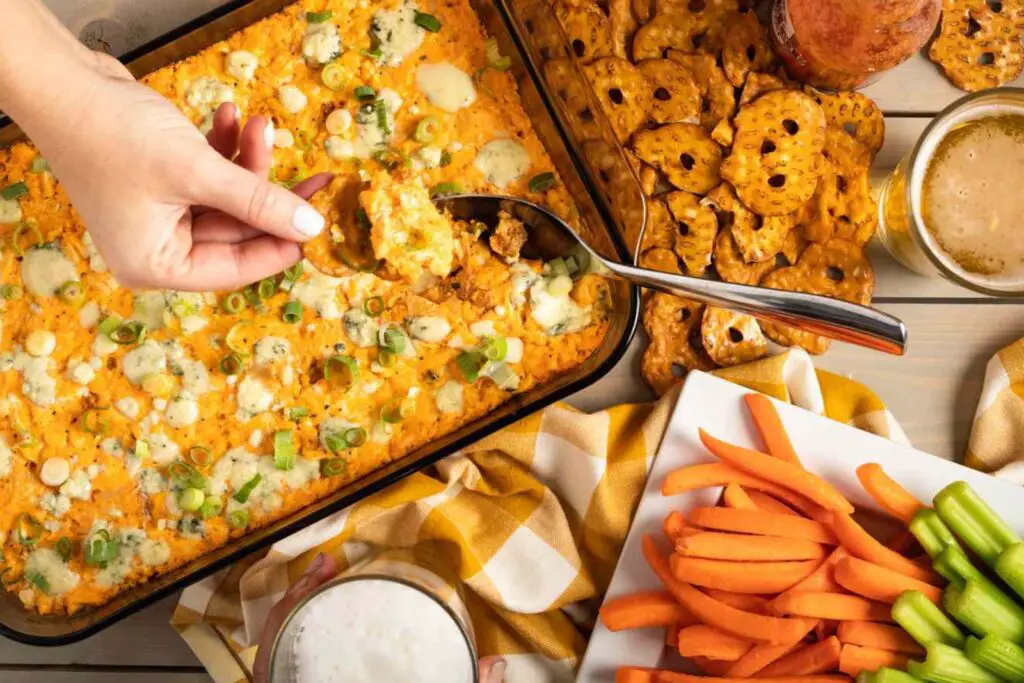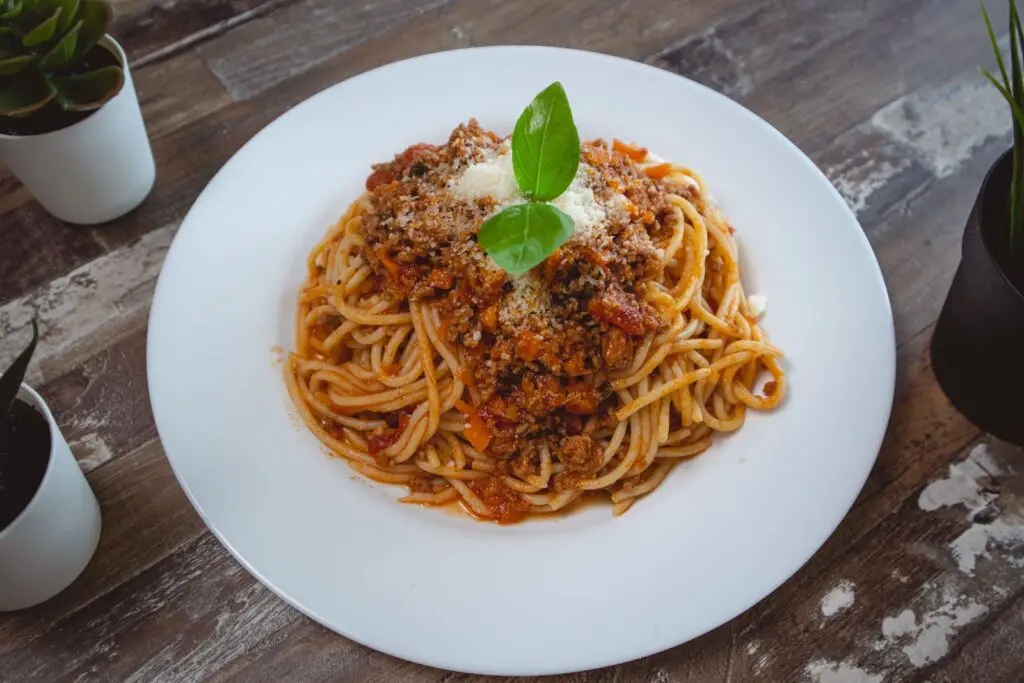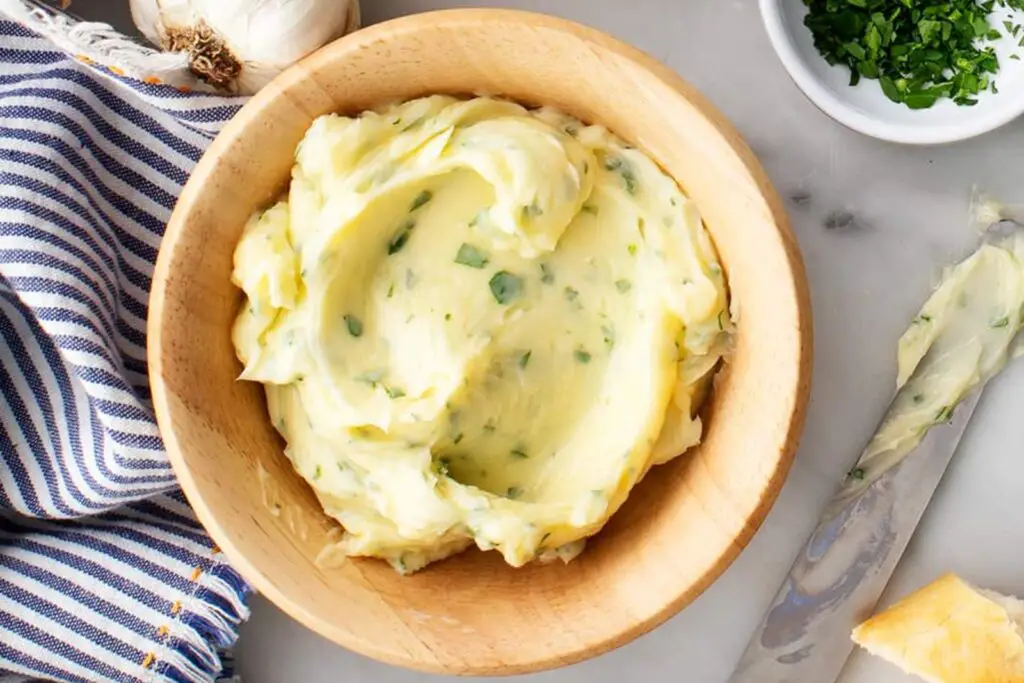
Chicken schnitzel, a beloved dish originating from Austria, is a crispy and flavorful breaded chicken cutlet that has gained popularity worldwide. This classic recipe involves pounding chicken breasts to a thin and even thickness, coating them in breadcrumbs, and frying them to golden perfection. The result is a tender and juicy chicken schnitzel with a delightful crunch. Whether enjoyed as a main course with a side of potatoes and salad or used as a filling for sandwiches and wraps, chicken schnitzel is a versatile and delicious option. If you find yourself with extra chicken schnitzels or want to prepare them in advance for future meals, freezing is an excellent method of preservation. Freezing chicken schnitzel allows you to maintain its texture and flavor, ensuring that you can enjoy this delectable dish whenever you desire. In this guide, we will explore the steps and techniques to properly freeze chicken schnitzel, from preparation to storage, so you can have a convenient and satisfying meal at your fingertips. Join us as we embark on the journey of freezing chicken schnitzel and discover the convenience of having this delightful dish readily available whenever the craving strikes.
Here are the simple steps to freeze chicken schnitzel:
Step 1: Cook Fresh Chicken Schnitzel
To begin the process of freezing chicken schnitzel, you need to cook a batch of fresh chicken schnitzel. This step involves preparing the chicken cutlets and breading them before frying. You have the flexibility to use your preferred recipe or follow a standard one. Here’s an explanation of this step:
- Gather the ingredients: Gather the necessary ingredients for making chicken schnitzel, which typically include chicken breasts or cutlets, flour, eggs, breadcrumbs, salt, pepper, and any additional seasonings or spices you prefer.
- Prepare the chicken: Start by flattening the chicken breasts or cutlets to an even thickness. You can do this by placing the chicken between two sheets of plastic wrap and using a meat tenderizer or rolling pin to pound it gently. This step ensures even cooking and tender results.
- Set up the breading station: Create a breading station by setting up three shallow dishes or bowls. Fill the first dish with flour, the second dish with beaten eggs, and the third dish with breadcrumbs mixed with salt, pepper, and any desired seasonings.
- Bread the chicken: Take a chicken cutlet and dredge it in the flour, coating both sides evenly and shaking off any excess. Then dip the floured cutlet into the beaten eggs, allowing any excess to drip off. Finally, place the cutlet in the breadcrumb mixture, pressing gently to ensure an even coating. Repeat this process with the remaining chicken cutlets.
- Fry the chicken schnitzel: Heat a skillet or frying pan over medium-high heat and add enough oil to cover the bottom. Once the oil is hot, carefully place the breaded chicken cutlets into the pan, being careful not to overcrowd them. Cook for about 3-4 minutes per side or until the chicken is cooked through and the breading is golden and crisp.
- Drain excess oil: After frying, transfer the cooked chicken schnitzel to a paper towel-lined plate or wire rack to drain any excess oil. This step helps maintain the desired texture and prevents the schnitzel from becoming soggy.
By cooking a batch of fresh chicken schnitzel with a golden and crispy breading. It is important to ensure that the chicken is cooked thoroughly to ensure food safety. Once the chicken schnitzel is cooked, you can proceed to the next steps of the freezing process to preserve its flavor and quality for future enjoyment.
Step 2: Cool the Chicken Schnitzel
After cooking the chicken schnitzel, it’s important to cool it completely before proceeding with the freezing process. This step is crucial to maintain the quality and safety of the chicken schnitzel. Here’s an explanation of why cooling is necessary and how to do it properly:
- Even freezing: Placing hot or warm food directly in the freezer can lead to uneven freezing. The exterior of the chicken schnitzel may freeze quickly, while the interior remains warm. This uneven freezing can affect the texture and taste of the schnitzel and may even promote bacterial growth.
- Prevent potential spoilage: Allowing the chicken schnitzel to cool before freezing helps prevent potential spoilage. Warm food provides an ideal environment for bacteria to multiply rapidly. By cooling the chicken schnitzel, you reduce the risk of bacterial growth and foodborne illnesses.
To cool the chicken schnitzel properly:
- Remove from heat: Once the chicken schnitzel is cooked to perfection, remove it from the heat source immediately. This step stops the cooking process and begins the cooling process.
- Transfer to a cooling rack: Place the cooked chicken schnitzel on a cooling rack. The cooling rack allows air to circulate around the schnitzel, helping it cool down more quickly and evenly. If you don’t have a cooling rack, you can use a clean, heat proof surface such as a baking sheet or a large plate.
- Avoid stacking or covering: Ensure that the chicken schnitzel pieces are not stacked on top of each other or covered immediately. Stacking or covering the hot schnitzel can trap steam and moisture, which can lead to condensation and potential loss of crispness. Leave the schnitzel uncovered to allow the excess heat to dissipate.
- Room temperature cooling: Allow the chicken schnitzel to cool at room temperature. Depending on the ambient temperature, it may take around 20-30 minutes for the schnitzel to cool completely. During this time, the residual heat will gradually dissipate, bringing the schnitzel to room temperature.
By cooling properly you ensure that the chicken schnitzel cools down completely before moving on to the freezing process. This cooling period allows for even freezing and reduces the risk of spoilage, ensuring that your frozen chicken schnitzel retains its desired texture and flavor when thawed and reheated.
Step 3: Wrap Individual Portions
Once the chicken schnitzel has cooled completely, the next step in the freezing process is to divide it into individual portions based on your serving size preferences. Wrapping each portion tightly in plastic wrap or aluminum foil is essential to protect the chicken from freezer burn and maintain its freshness. Here’s an explanation of why this step is important and how to do it effectively:
- Portion control: Dividing the chicken schnitzel into individual portions allows for convenient thawing and serving later on. It helps you freeze only the amount you’ll need for a single meal, reducing waste and ensuring that the remaining portions remain undisturbed in the freezer.
- Protection from freezer burn: Freezer burn is a condition that occurs when food is exposed to air in the freezer. It causes dehydration and oxidation, resulting in changes in texture, flavor, and overall quality. Wrapping the chicken schnitzel tightly helps create a barrier against air, minimizing the risk of freezer burn.
- Maintaining freshness: Proper wrapping helps to maintain the freshness of the chicken schnitzel. It prevents odors from other foods in the freezer from being absorbed, and it also helps to retain the flavors and moisture of the schnitzel, ensuring a more enjoyable eating experience when it’s later thawed and reheated.
To wrap the chicken schnitzel portions effectively:
- Prepare the wrapping material: Cut sheets of plastic wrap or aluminum foil into appropriate sizes to accommodate each portion of chicken schnitzel. The size should be large enough to completely enclose the schnitzel while allowing for a tight seal.
- Place a portion on the wrap: Take one portion of chicken schnitzel and place it in the center of the plastic wrap or aluminum foil.
- Wrap tightly: Fold the sides of the wrap over the schnitzel, then fold the top and bottom edges to cover it completely. Press and fold the edges tightly to create a secure seal. Make sure there are no gaps or openings that could allow air to reach the chicken.
- Repeat for each portion: Repeat the process for each portion of chicken schnitzel, wrapping them individually.
- Optional double wrapping: If desired, you can wrap each portion again with an additional layer of plastic wrap or aluminum foil for extra protection.
By wrapping individually, you ensure that each portion of chicken schnitzel is individually wrapped, tightly sealed, and protected from freezer burn. This wrapping process helps maintain the freshness and quality of the schnitzel during freezing, making it easier to thaw and enjoy a single portion at a time without compromising the remaining portions in the freezer.
Can you freeze chicken schnitzel in parchment paper?
Yes, you can freeze chicken schnitzel in parchment paper. Wrapping the schnitzel in parchment paper provides an additional layer of protection against freezer burn and helps maintain its texture and quality. Ensure that the parchment paper is tightly wrapped around the schnitzel and consider placing it in a freezer bag or container for further protection.
Step 4: Place in Freezer Bags
Once you have wrapped the individual portions of chicken schnitzel, the next step is to transfer them to freezer bags. Placing the wrapped portions in freezer bags provides an extra layer of protection against freezer burn and helps maintain the quality of the chicken schnitzel during freezing. Here’s an explanation of why this step is important and how to do it effectively:
- Enhanced protection: Freezer bags are designed to provide a barrier against air and moisture, offering better protection than regular plastic wrap or aluminum foil alone. They help prevent freezer burn and keep the chicken schnitzel fresh for an extended period.
- Prevents cross-contamination: Placing the wrapped chicken schnitzel portions inside freezer bags helps prevent cross-contamination with other foods in the freezer. It creates a dedicated space for the schnitzel and reduces the risk of absorbing odors or flavors from other items.
- Tight sealing: It’s crucial to ensure that the freezer bags are sealed tightly to prevent air from entering. Air exposure can lead to freezer burn and diminish the quality of the chicken schnitzel. Properly sealed bags also help retain the moisture and flavors of the schnitzel, resulting in better taste and texture when thawed and reheated.
To place the wrapped chicken schnitzel portions in freezer bags effectively:
- Select appropriate freezer bags: Choose high-quality, freezer-safe bags that are durable and can withstand low temperatures. Ensure that the bags are large enough to accommodate the wrapped portions comfortably.
- Open the bag: Open the freezer bag, holding it with one hand while keeping the opening wide.
- Place the wrapped portions: Carefully transfer the individually wrapped chicken schnitzel portions into the freezer bag. Arrange them in a single layer, ensuring that they are not stacked on top of each other.
- Remove excess air: Squeeze out as much air as possible from the bag before sealing it. You can use your hands or a straw inserted into a small opening to remove excess air. Removing air minimizes the risk of freezer burn and helps maintain the quality of the chicken schnitzel.
- Seal the bag tightly: Once the excess air is removed, seal the bag tightly. Use the zipper or press-seal closure, depending on the type of freezer bag you’re using. Ensure that the seal is secure and airtight.
- Optional double bagging: If desired, you can place the sealed freezer bag with the chicken schnitzel portions inside another freezer bag for an added layer of protection.
By placing it in the freezer bags, you ensure that the wrapped chicken schnitzel portions are placed in freezer bags, tightly sealed, and protected from air and moisture. This step enhances the preservation of the chicken schnitzel during freezing, maintaining its quality and ensuring a delicious meal when it’s later thawed and reheated.
Step 5: Label the Freezer Bags
After placing the wrapped chicken schnitzel portions in freezer bags, it’s important to label the bags with the date and contents. Labeling allows for easy identification and helps you keep track of the freezing time, ensuring that you consume the chicken schnitzel within a recommended timeframe. Here’s an explanation of why this step is crucial and how to label the freezer bags effectively:
- Easy identification: Labeling the freezer bags helps you quickly identify the contents without having to open each bag. It saves time and makes it easier to find the specific portion of chicken schnitzel you want to thaw and use.
- Tracking freezing time: By including the date on the label, you can keep track of how long the chicken schnitzel has been frozen. This information is important for maintaining food safety and quality. It allows you to prioritize consuming the oldest portions first and helps prevent freezer burn or deterioration from prolonged storage.
- Recommended timeframe: Chicken schnitzel, like any frozen food, has a recommended timeframe for safe consumption. Labeling the bags allows you to ensure that you consume the chicken schnitzel within the recommended period, which helps maintain its flavor, texture, and overall quality.
To label the freezer bags effectively:
- Gather labeling materials: Have a marker, label stickers, or adhesive tape ready for labeling the bags. Choose a marker that writes well on plastic surfaces and is resistant to smudging or fading.
- Mark the date: Write the date of freezing on the label, indicating the day, month, and year. It’s helpful to use a format that is easy to understand, such as “MM/DD/YYYY.”
- Note the contents: Write a brief description of the contents on the label, such as “Chicken Schnitzel.” This information will remind you of what is inside each bag, especially if you have multiple types of frozen food in your freezer.
- Attach the label: Stick the label on the front or top of the freezer bag, where it is clearly visible. Ensure that it adheres securely and is not likely to fall off during storage.
- Optional color-coding: If you have a system for organizing your freezer, you can use different-colored labels or markers to color-code the chicken schnitzel bags. This can help you differentiate them from other frozen items or indicate different flavors or variations of schnitzel.
By labeling it on the freezer bags, you can effectively label the freezer bags containing the chicken schnitzel portions. This labeling process facilitates easy identification, helps track freezing time, and ensures that you consume the chicken schnitzel within the recommended timeframe for optimal quality and safety.
Step 6: Store in the Freezer
Once you have labeled the freezer bags containing the chicken schnitzel portions, it’s time to transfer them to the freezer for long-term storage. Proper storage in the freezer is essential to maintain the quality and safety of the chicken schnitzel. Here’s an explanation of why this step is important and how to store the bags effectively:
- Maximizing space: Placing the labeled freezer bags in a flat position helps maximize the available space in the freezer. By arranging them neatly and evenly, you can stack the bags on top of each other or line them up side by side, optimizing the storage capacity of your freezer.
- Preventing damage: Storing the chicken schnitzel portions in a flat position minimizes the risk of damage during freezing and storage. It helps prevent the portions from shifting, getting crushed, or losing their shape. This ensures that the schnitzel remains intact and maintains its desired texture and appearance.
To store the freezer bags effectively:
- Clear a space: Clear a suitable space in your freezer where the labeled freezer bags can be stored without obstruction. Make sure the area is clean and free from any spills or debris that could contaminate the bags.
- Flat positioning: Place the labeled freezer bags in a flat position, either by stacking them or lining them up side by side. If stacking, ensure that the bags are stable and won’t topple over. If lining up side by side, arrange them in a way that allows easy access to each bag without disturbing others.
- Avoid overcrowding: Avoid overcrowding the freezer with too many items or bags, as it can restrict airflow and affect the freezing process. Leave enough space between the bags for proper air circulation, which helps maintain consistent temperatures throughout the freezer.
- Strategic placement: Consider strategic placement of the chicken schnitzel bags. For example, you can place them in a specific section or area of the freezer designated for frozen meats or prepared meals. This helps you locate them easily and keeps them organized.
By storing properly in the freezer, you can store the labeled freezer bags containing the chicken schnitzel portions in a way that maximizes space and minimizes the risk of damage. Proper storage in the freezer ensures that the chicken schnitzel remains safe, maintains its quality, and is easily accessible when you’re ready to thaw and enjoy a delicious meal.
How long can chicken schnitzel last in the freezer?
Chicken schnitzel can last in the freezer for up to 3 months while maintaining good quality. It is recommended to consume frozen chicken schnitzel within this timeframe for optimal taste and texture. Proper storage, including wrapping in freezer-safe materials, sealing in freezer bags, and labeling with the freezing date, helps maintain the schnitzel’s quality during freezing.
Step 7: Thaw and Reheat
When you’re ready to enjoy the frozen chicken schnitzel, it’s important to thaw it properly before reheating. Thawing allows the schnitzel to defrost evenly and ensures safe consumption. Once thawed, you can reheat the chicken schnitzel to restore its crispy texture and delicious flavors. Here’s an explanation of why this step is important and how to thaw and reheat the chicken schnitzel effectively:
- Thawing for even defrosting: Thawing the frozen chicken schnitzel in the refrigerator overnight is the safest method. It allows the schnitzel to defrost gradually and evenly, reducing the risk of bacterial growth and maintaining its quality.
- Safe temperature control: Thawing in the refrigerator provides a controlled environment where the chicken schnitzel remains at a safe temperature (below 40°F or 4°C). This inhibits bacterial growth and minimizes the risk of foodborne illnesses.
To thaw the chicken schnitzel properly:
- Plan ahead: Determine the number of portions you want to thaw for your upcoming meal and take them out of the freezer the night before you plan to cook them. This gives them enough time to thaw thoroughly in the refrigerator.
- Retrieve the portions: Remove the desired number of chicken schnitzel portions from the freezer. Leave the remaining portions undisturbed in the freezer for future use.
- Transfer to a plate or container: Place the frozen chicken schnitzel portions on a plate or in a container to catch any potential drips or condensation as they thaw.
- Thaw in the refrigerator: Transfer the plate or container with the chicken schnitzel portions to the refrigerator. Allow them to thaw overnight or for approximately 24 hours, depending on the size and thickness of the portions. Thawing times may vary, so it’s essential to check their doneness before reheating.
Once the chicken schnitzel is thawed, you can proceed to reheating it:
- Preheat the oven or skillet: Preheat your oven to a moderate temperature, typically around 350°F (175°C). Alternatively, if you prefer stovetop reheating, preheat a skillet over medium heat.
- Reheat in the oven: Place the thawed chicken schnitzel portions on a baking sheet or in an oven-safe dish. Reheat them in the preheated oven for approximately 10-15 minutes or until they are heated through and the breading becomes crispy again.
- Reheat in a skillet: Add a small amount of oil or butter to the preheated skillet. Place the thawed chicken schnitzel portions in the skillet and cook for approximately 2-3 minutes per side or until they are heated through and the breading becomes crispy.
- Check for doneness: Ensure that the chicken schnitzel is heated to an internal temperature of at least 165°F (74°C) to ensure food safety. Use a meat thermometer to verify the temperature if needed.
By thawing and reheating properly, you can thaw the frozen chicken schnitzel safely and reheat it to restore its crispy texture and delicious flavors. Thawing in the refrigerator overnight and reheating in the oven or skillet helps maintain the schnitzel’s quality and ensures a satisfying meal.
Other related questions
Can you refreeze chicken schnitzel?
It is generally not recommended to refreeze chicken schnitzel once it has been thawed. Refreezing can lead to a decline in quality, as the texture and taste may be affected. It is best to consume chicken schnitzel after thawing and reheating it properly to ensure food safety and enjoyable dining experience.
How do I know if the chicken schnitzel has gone bad after being frozen?
To determine if frozen chicken schnitzel has gone bad, inspect its appearance, smell, and texture. If the schnitzel appears discolored, has an off-putting odor, or feels slimy or mushy to the touch, it may have spoiled. Additionally, if there are any signs of mold growth or the packaging is damaged, it is best to discard the chicken schnitzel to avoid the risk of foodborne illness.
Is it safe to freeze chicken schnitzel with sauce or gravy?
It is generally safe to freeze chicken schnitzel with sauce or gravy, but there are considerations to keep in mind. The quality of the sauce or gravy may change during freezing and reheating, potentially affecting its texture and flavor.
Can I freeze chicken schnitzel if it has already been cooked and breaded?
Yes, it is possible to freeze chicken schnitzel that has already been cooked and breaded. However, it’s important to note that the texture of the schnitzel may change slightly during freezing and reheating. To minimize this, ensure that the schnitzel is cooled properly before freezing and wrap it tightly to prevent freezer burn. When reheating, use methods that help retain the crispiness, such as baking in the oven or using a skillet.








